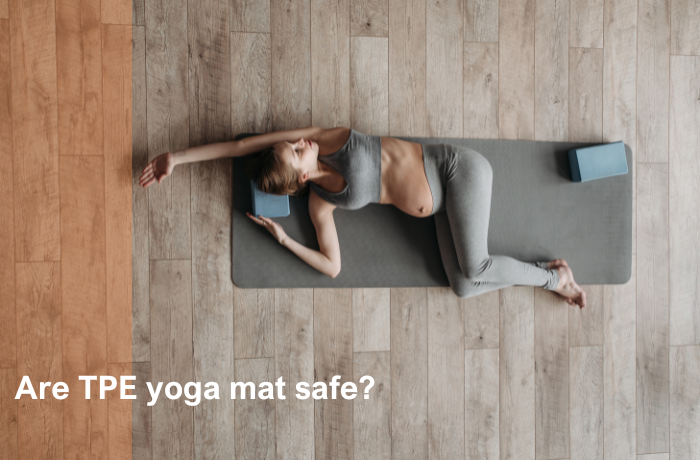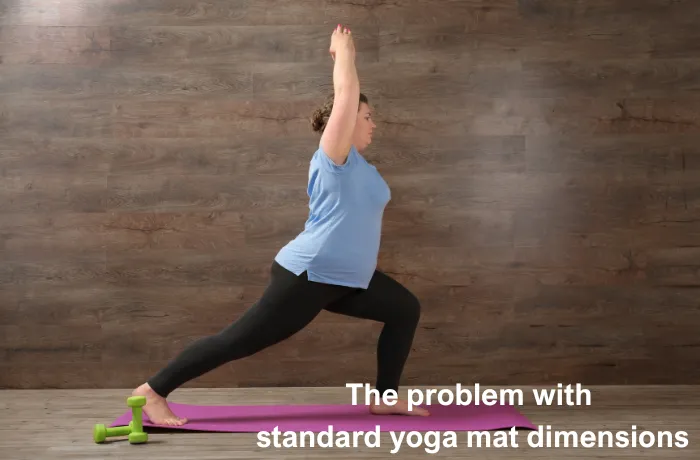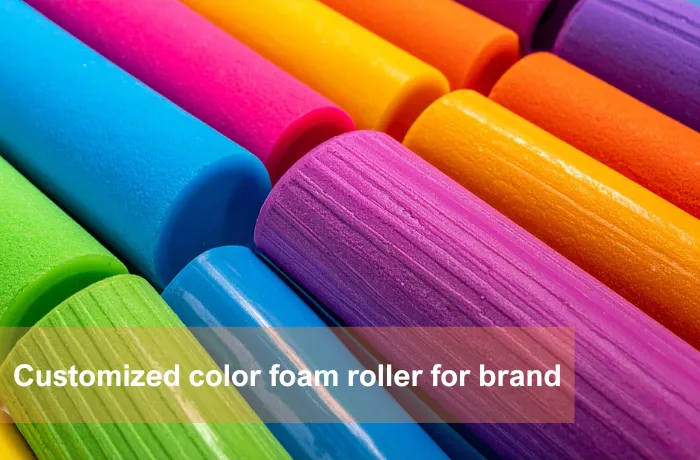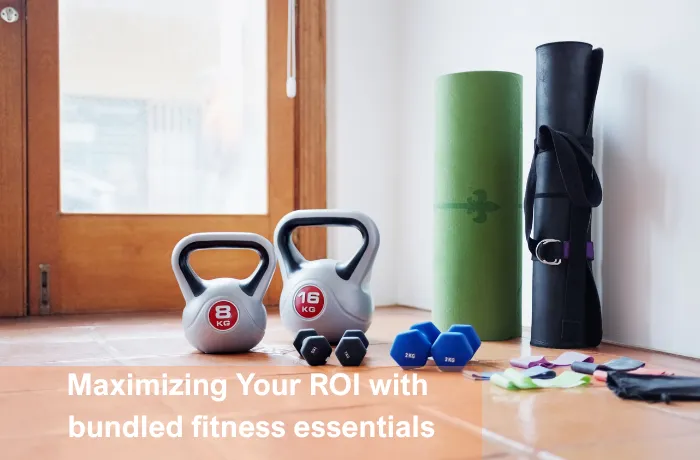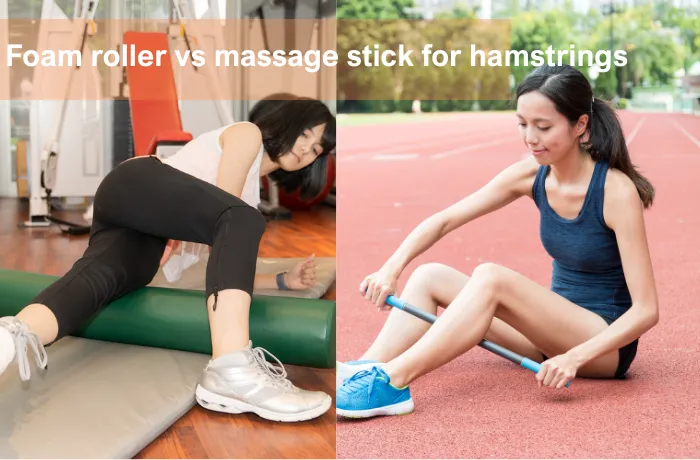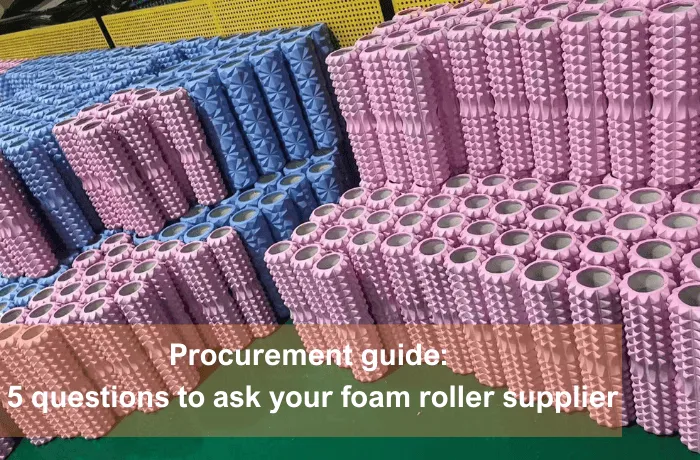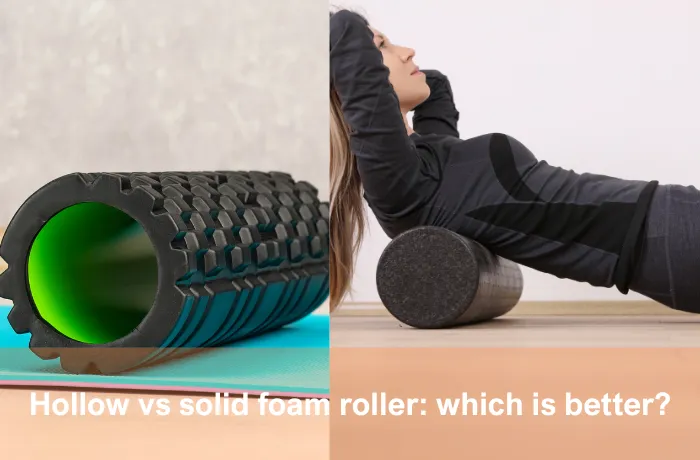Es posible que se pregunte si una esterilla de yoga de TPE es segura. La mayoría de las esteras del yoga de TPE no son tóxicas y son seguras de utilizar. Esto es verdad si usted elige una buena marca de fábrica. Estas esteras del yoga son una buena opción para la gente que desea algo seguro y fuerte. Pero, todavía hay algunas preocupaciones sobre los productos químicos que salen, especialmente cuando la estera consigue caliente. TPE se llama eco-amistoso, pero no se descompone en la naturaleza. También utiliza productos derivados del petróleoque pueden dañar la tierra. Antes de comprar una esterilla de yoga, lee siempre la etiqueta para conocer los datos sobre seguridad y respeto al medio ambiente.
Principales conclusiones
- Las esterillas de yoga de TPE suelen ser seguras si compras buenas marcas. Estas esterillas no contienen sustancias químicas nocivas. Son ligeras y fáciles de transportar. Las esterillas de TPE no provocan alergias ni problemas cutáneos. Tienen un buen agarre, por lo que no resbalan. Las esterillas de TPE huelen poco. No emiten muchos gases nocivos. Esto hace que sean mejores para su uso en interiores. Las alfombrillas de TPE son más respetuosas con el medio ambiente que las de PVC. A menudo se pueden reciclar. Pero no se descomponen como las alfombrillas de corcho o caucho. Lee siempre las etiquetas antes de comprar. Busca esterillas de TPE seguras y no tóxicas. Elige alfombrillas que sean buenas para el planeta y se adapten a tus necesidades.
¿Qué es una esterilla de yoga TPE?
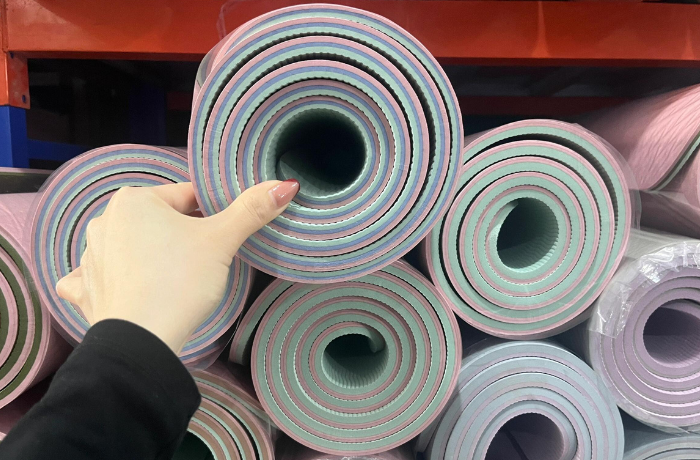
Fundamentos de los materiales TPE
Una esterilla de yoga TPE está hecha de elastómero termoplástico o TPE. Este material es flexible como el caucho y puede moldearse como el plástico. Los científicos han estudiado el TPE para ver si es seguro y funciona bien. Los TPE se fabrican mezclando distintos polímeros. La mezcla puede variar según el tipo. En la tabla siguiente puedes ver los principales tipos y de qué están hechos:
| Tipo TPE | Composición química Componentes | Descripción |
|---|---|---|
| TPE-S | Estireno, butadieno, isopreno, etileno | Los más comunes; propiedades similares al caucho y al plástico |
| TPE-O | Polietileno, caucho nitrílico | Ligero, no tóxico, más nuevo |
| TPE-U | Caucho de silicona + otros TPE | Combina caucho de silicona con otros elastómeros |
| TPE-E | Segmentos de poliéster cristalino y amorfo | Contiene segmentos duros y blandos |
| TPE-A | Poliésteres (blandos), Poliamidas (duros) | Mezcla segmentos de polímeros blandos y duros |
El TPE actúa como el caucho cuando está frío. Puede moldearse como el plástico cuando se calienta. Esto facilita su reciclaje. Pero algunos tipos, como TPE-S, puede desprender malos humos. Debes comprobar la etiqueta o preguntar a la empresa sobre el tipo de TPE de tu alfombrilla. Algunas sustancias químicas, como el butadieno, pueden ser peligrosas.
¿Por qué utilizar TPE en las esterillas de yoga?
Mucha gente elige una estera del yoga del tpe por buenas razones:
- Las alfombrillas de TPE ayudan a agarrarse al suelo para no resbalar. Los estudios dicen que el agarre es tan bueno como el de las alfombrillas de PVC.
- La colchoneta es blanda, pero no demasiado. Esto ayuda a tus articulaciones y te mantiene estable.
- Las esterillas de TPE no dejan pasar el agua ni los gérmenes. Esto mantiene su alfombrilla más limpia y segura.
- Las alfombrillas de TPE no contienen sustancias químicas nocivas como ftalatos o dioxinas.
- Puedes reciclar las alfombrillas de TPE, lo que es mejor para la Tierra.
- Las alfombrillas de TPE son ligeras y fáciles de mover. A mucha gente le gusta esto.
- Los expertos afirman que las esterillas de TPE funcionan bien para largos tiempos de yoga y muchos estilos.
- Si sudas mucho, las esterillas de TPE son buenas porque no absorben el agua.
- Algunas alfombrillas de TPE pueden no durar tanto, así que elige una buena marca.
- Las alfombrillas de TPE ofrecen comodidad, seguridad y son mejores para el planeta.
Consejo: Lee siempre las opiniones e infórmate sobre la marca antes de comprar una esterilla de yoga TPE. Esto te ayudará a conseguir una esterilla buena y segura.
¿Son seguras las esterillas de yoga de TPE?
Seguridad química
Puede que te preguntes si una esterilla de yoga tpe es segura para ti. La mayoría de las esteras del yoga del tpe utilizan los materiales seguros. No liberan sustancias químicas peligrosas cuando las utilizas. Las buenas esterillas de yoga de tpe no necesitan plastificantes. Esto significa que no tiene que preocuparse de que se filtren sustancias químicas. Los científicos comprueban la seguridad de estas alfombrillas. Prueban si las esterillas son seguras para la piel y el cuerpo. Estas pruebas demuestran que las esteras seguras del yoga del tpe no dejan hacia fuera la materia mala.
Nota: La seguridad de tu esterilla depende de la marca y de cómo esté fabricada. Algunas colchonetas no están bien hechas y pueden ser peligrosas. Elige siempre una marca en la que confíes.
Es posible que oiga hablar de los COV o de la desgasificación. Las buenas esteras del yoga del tpe tienen VOCs muy bajos. Esto significa que usted no respirará en malos olores durante yoga. Las reglas dicen que las compañías deben probar las esteras para la seguridad química. Estas reglas ayudan a mantenerle seguro y a cerciorarse de que la estera es buena.
- El TPE es seguro y no provoca alergias.
- Las buenas alfombrillas no dejan escapar sustancias químicas nocivas.
- Las alfombrillas de TPE contienen menos COV que otras alfombrillas.
- La seguridad depende de cómo esté fabricada la alfombrilla.
Sin sustancias químicas nocivas
Usted desea una estera del yoga que no tenga productos químicos malos. La mayoría de las esterillas de yoga de tpe no contienen ftalatos, BPA, PVC ni plomo. Estas sustancias químicas pueden dañar tu salud. Pueden alterar las hormonas o incluso provocar cáncer. Los estudios demuestran que las esterillas de yoga de tpe no contienen estas sustancias químicas. Pero algunas esteras baratas pueden utilizar el tpe malo con cosas como el estireno o el butadieno. Comprueba siempre la etiqueta y mira lo que dice la empresa.
Las pruebas demuestran que las esterillas de yoga de tpe suelen ser seguras para usted. No tienen los productos químicos malos encontrados en muchas esteras del PVC. Pero la seguridad de tu esterilla depende de la mezcla de tpe y de si la empresa es honesta sobre lo que contiene.
Consejo: Elige esterillas de yoga de marcas que compartan sus pruebas de seguridad y lo que contiene la esterilla. Esto te ayudará a mantenerte alejado de las esterillas con sustancias químicas nocivas ocultas.
Propiedades hipoalergénicas
Si tienes alergias o piel sensible, querrás una esterilla que no te moleste. Los estudios afirman que las esterillas de yoga de tpe son seguras y no provocan alergias. Estas esterillas no contienen látex, ftalatos, BPA ni PVC. Éstas son las cosas que pueden causar alergias. Usted puede ver cómo las esteras del yoga del tpe comparan a otras esteras en la tabla abajo:
| Aspecto probatorio | Descripción |
|---|---|
| Composición química | Las alfombrillas de TPE no contienen sustancias químicas nocivas como ftalatos, BPA, PVC o látex. |
| Propiedades hipoalergénicas | Las alfombrillas de TPE no provocan problemas cutáneos ni alergias. |
| Desgasificación mínima | Las alfombrillas de TPE emiten muy pocos COV, por lo que respirarás mejor. |
| No tóxico y químicamente estable | El TPE no se descompone ni desprende malos humos con el paso del tiempo. |
| Seguridad en los productos para bebés | El TPE se utiliza en artículos para bebés que deben ser muy seguros. |
| Comparación con las alfombrillas de PVC | Las alfombrillas de PVC son irritantes y desprenden sustancias químicas nocivas, pero las de TPE no. |
Los estudios demuestran que las esterillas de yoga de tpe no provocan alergias ni problemas cutáneos. Puedes utilizar estas alfombrillas incluso si tu piel es sensible. El TPE es tan seguro que las empresas lo utilizan en productos para bebés, que deben ser muy seguros.
Si quieres una esterilla de yoga segura y no tóxica, las esterillas de yoga tpe son una buena opción para tu salud y comodidad.
Esterillas de yoga TPE y salud
Desgasificación y COV
Cuando desenrollas una esterilla de yoga nueva, es posible que notes un olor. Este olor procede de la desgasificación. La desgasificación se produce cuando los materiales liberan gases denominados COV o compuestos orgánicos volátiles. Mucha gente se preocupa de estos gases porque pueden causar preocupaciones de la salud. Las esteras del yoga de TPE se destacan porque son no tóxicas y lanzan muy pocos VOCs. Puede utilizar estas esterillas en su casa o estudio sin preocuparse de respirar sustancias químicas nocivas.
La mayoría de las esterillas de yoga de TPE no necesitan plastificantes ni aditivos adicionales. Esto las hace seguras para su salud. Usted no encontrará el olor químico fuerte que viene de las esteras del PVC. Si usted tiene una nariz sensible o desea un espacio de aire limpio, las esteras del yoga de TPE son una buena opción. Deje siempre su nueva estera ventilar hacia fuera por un día antes de usarla. Este paso ayuda a eliminar cualquier ligero olor que haya quedado de fábrica.
Consejo: Elija esterillas de yoga TPE de marcas de confianza para evitar posibles riesgos para la salud derivados de aditivos desconocidos.
Contacto con la piel y alergias
Tu piel toca tu esterilla de yoga cada vez que practicas. Quieres una esterilla que sea segura y suave. Las esterillas de yoga de TPE son no son tóxicos y no contienen látex, ftalatos ni otros alérgenos comunes. Las personas con piel sensible o alergias pueden utilizar estas esterillas sin preocuparse. Ningún informe relaciona las esterillas de yoga TPE con reacciones cutáneas o alergias. Esto las hace seguras para la salud y el uso diario.
Las alfombrillas de caucho natural pueden provocar reacciones alérgicas porque contienen látex. Las esterillas de PVC no suelen causar alergias, pero tienen sustancias químicas que plantean otros problemas de salud. Las esterillas de yoga de TPE evitan estos problemas. Se pueden consultar en resiste el sudor y los aceites corporalespara que tu piel se mantenga cómoda durante largas sesiones. Puedes confiar en las esterillas de yoga TPE para proteger tu piel y cuidar tu salud.
Si quieres una esterilla de yoga no tóxica, segura e hipoalergénica, las esterillas de yoga de TPE son una elección inteligente. Reducen los riesgos para la salud de las esterillas de TPE y te ayudan a concentrarte en tu práctica.
Impacto medioambiental de las esterillas de yoga de TPE

Reciclabilidad
Si quieres una esterilla de yoga ecológica, puedes preguntar si se puede reciclar. Las esterillas de yoga de TPE son más seguras y mejores para la tierra que las de PVC. Muchas alfombrillas de TPE pueden reciclarse, pero antes hay que comprobar la etiqueta. Las alfombrillas de TPE no utilizan productos químicos nocivos en su fabricación. Esto las convierte en una buena opción para el medio ambiente.
Compara las alfombrillas de TPE con otros tipos de alfombrillas:
- Las esterillas de yoga de TPE pueden reciclarse y no son tóxicas. Utilizan algunos materiales renovables, por lo que son mejores para la Tierra que las esterillas de PVC.
- Las alfombras de PVC no pueden reciclarse. Tienen sustancias químicas nocivas y permanecen mucho tiempo en los vertederos.
- Las alfombrillas de caucho natural proceden de plantas, pero no siempre se sabe si pueden reciclarse.
Las alfombrillas de TPE son más fáciles de reciclar que las de PVC. Pero algunos lugares de reciclaje no los aceptan porque cuestan más o son difíciles de hacer. La mayoría de las alfombrillas de TPE siguen yendo a la basura, pero elegir una alfombrilla que puedas reciclar ayuda al planeta.
Biodegradabilidad
Tal vez se pregunte si las esterillas de yoga de TPE se descomponen en la naturaleza. Las alfombrillas TPE están fabricadas con caucho artificial y plástico. No se descomponen en los vertederos ni en los cubos de compostaje domésticos. Algunas esteras de TPE tienen partes vegetales, pero sólo se descomponen en lugares especiales para compost. La mayoría de las alfombrillas de TPE no desaparecen en la naturaleza como las de corcho o caucho natural.
Las alfombras de corcho son una de las mejores opciones para la Tierra. El corcho procede de la corteza de un árbol que vuelve a crecer, por lo que es muy respetuoso con el medio ambiente. Las alfombrillas de corcho y caucho natural se descomponen y ayudan al planeta. Las alfombrillas de TPE son mejores que las de PVC, pero no son tan ecológicas como las de corcho o caucho natural. Si quieres una esterilla de TPE más ecológica, busca marcas que utilicen material reciclado y contribuyan al reciclaje. Esto hace que tu práctica de yoga sea mejor para el planeta y te ofrece más opciones ecológicas.
Comparación de esterillas de yoga: TPE vs. Otros
TPE frente a PVC
Cuando se comparan las esterillas de yoga de TPE con las de PVC, se aprecian grandes diferencias en cuanto a seguridad y medio ambiente. Las esterillas de TPE se conocen como esterillas de yoga ecológicas. No contienen productos químicos nocivos como ftalatos o metales pesados. Notarás menos olor y menos humos cuando utilices una esterilla de TPE. Las esterillas de PVC suelen tener un olor fuerte y pueden liberar sustancias químicas que pueden molestarle al respirar. Si quieres una opción ecológica, las esterillas de TPE son mejores para ti y para el planeta.
He aquí un cuadro que le ayudará a ver las principales diferencias:
| Aspecto | Esterillas de yoga TPE | Colchonetas de yoga de PVC |
|---|---|---|
| Seguridad química | Sin productos químicos nocivos; bajo olor | Puede contener ftalatos; olor fuerte |
| Impacto medioambiental | Ecológico, reciclable | No es ecológico, difícil de reciclar |
| Sensibilidad del usuario | Bueno para usuarios sensibles | Puede causar irritación |
Las esterillas de TPE son más seguras y ecológicas que las de PVC. Al elegir esterillas de yoga ecológicas fabricadas con TPE, ayudas a la Tierra.
TPE vs. Caucho
Las alfombras de caucho natural son otra opción popular. Proceden de los árboles, por lo que son ecológicas y biodegradables. Las alfombrillas de goma ofrecen un gran agarre y duran mucho tiempo. Algunas personas no pueden utilizar alfombrillas de caucho porque son alérgicas al látex. Las alfombrillas de TPE son hipoalergénicas y no contienen látex, por lo que son seguras para todo el mundo. Las esterillas de TPE son más ligeras y fáciles de transportar, pero no duran tanto como las de goma.
- Alfombrillas de goma:
- Ecológico y duradero
- Excelente agarre
- Más pesado y puede provocar alergias
- Esteras de TPE:
- Ligero e hipoalergénico
- Buen agarre pero menos duradero
- Esterillas de yoga ecológicas, pero no tanto como el caucho
Si quieres una alfombrilla que sea a la vez ecológica y segura para las alergias, las alfombrillas de TPE son una elección inteligente.
TPE vs. Corcho
Las esterillas de corcho son unas de las esterillas de yoga más ecológicas que puedes comprar. El corcho procede de la corteza de los árboles, y su recolección no daña al árbol. Las esterillas de corcho combaten los gérmenes y los olores, lo que ayuda a mantener limpia la práctica. Se agarran mejor cuando están mojadas, por lo que funcionan bien para el yoga caliente. Las esterillas de corcho son más pesadas y cuestan más que las de TPE. Las alfombrillas de TPE son más ligeras, menos caras y aún cuentan como alfombrillas de yoga ecológicas, pero las de corcho son la mejor opción para el planeta.
| Aspecto | Esterillas de yoga TPE | Colchonetas de yoga de corcho |
|---|---|---|
| Ecológico | Sí, pero menos que el corcho | Muy ecológico |
| Beneficios para la salud | Hipoalergénico, con poco olor | Antimicrobiano, sin productos químicos |
| Durabilidad | Bastante duradero, ligero | Duradero, más pesado |
Puedes elegir esterillas de yoga ecológicas fabricadas con TPE para conseguir un equilibrio entre precio, peso y seguridad. Si quieres la opción más ecológica, las esterillas de corcho son las mejores.
Elegir una estera segura del yoga de TPE
¿En qué fijarse?
Cuando compre esterillas de yoga tpe, querrá que sean seguras. Primero, compruebe la etiqueta para saber si hay hechos claros. Cerciórese de que diga "TPE" o "elastómero termoplástico" como el material principal. Las buenas marcas indican todos los ingredientes en la etiqueta. También dicen si la esterilla es reciclable y segura para ti.
Busca también características ecológicas. Algunas marcas utilizan materiales reciclados o caucho natural procedente de lugares seguros. Estas opciones ayudan a salvar los bosques y apoyan las esterillas de yoga ecológicas. Si quieres una esterilla más sana, elige una sin PVC, ftalatos ni otras sustancias químicas nocivas.
Consejo: Elija marcas que informan sobre el contenido de sus alfombrillas y comprueban su seguridad.
Certificaciones y etiquetas
Las certificaciones te ayudan a saber si una alfombrilla es segura y ecológica. Las etiquetas de confianza demuestran que la esterilla cumple normas estrictas de seguridad y protección del medio ambiente. Estas son algunas de las certificaciones más importantes:
- RoHS: Indica que la alfombrilla no contiene sustancias peligrosas.
- REACH: Cumple las estrictas normas europeas de seguridad química.
- SGS o Intertek: laboratorios que comprueban que las alfombrillas no son tóxicas.
- Conforme a la FDA: Demuestra que la alfombrilla no contiene ftalatos ni metales pesados.
- ISO 14001: Demuestra que la empresa utiliza la fabricación ecológica.
No te fíes de las alfombrillas que sólo dicen "ecológicas" o "no tóxicas" sin ninguna prueba. Las marcas con estas certificaciones se preocupan por la comodidad y el planeta.
Evitar aditivos nocivos
No todas las esterillas de yoga están fabricadas de la misma manera. Algunas esterillas baratas pueden contener sustancias químicas peligrosas. Cuidado con estos malos aditivos:
- Estrógenos sintéticos, que pueden alterar tus hormonas.
- Nitrosaminas, que están relacionadas con el cáncer.
- Azodicarbonamida (ADA), llamada la "sustancia química de la esterilla de yoga".
- Ftalatos, que pueden desprenderse cuando la alfombrilla se calienta.
- Otras toxinas como COV, HAP, cloro gaseoso, mercurio y dioxinas.
Las buenas marcas no utilizan estos productos químicos y fabrican esterillas de yoga ecológicas y seguras. Prueban sus esterillas en laboratorios y comparten los resultados. Cuando compras esterillas de marcas de confianza, contribuyes a tu seguridad y a la de la Tierra.
Puedes sentirte seguro al utilizar esterillas de yoga de TPE si eliges marcas de confianza y compruebas las etiquetas de seguridad. La mayoría de las esterillas de TPE no contienen sustancias químicas nocivas, pero lee siempre la etiqueta. Los expertos te lo sugieren:
- Alfombrillas hechas de materiales no tóxicos, naturales o sostenibles.
- Evita las esterillas con PVC, BPA o metales pesados.
- Busca certificaciones como OEKO-TEX o GOTS.
- Elige esterillas que duren y se adapten a tu estilo de yoga.
Una alfombrilla segura y ecológica te ayuda a ti y al planeta.
PREGUNTAS FRECUENTES
¿Cómo se limpia una esterilla de yoga de TPE?
Puedes limpiar tu esterilla de yoga TPE con un paño húmedo y jabón suave. Déjala secar al aire. No utilices productos de limpieza agresivos ni la metas en la lavadora. Así mantendrás tu esterilla limpia y segura.
¿Huelen mal las esterillas de yoga de TPE?
La mayoría de las esterillas de yoga de TPE huelen poco o nada. Si notas un ligero olor, deja que la esterilla se airee durante un día. Las marcas de confianza fabrican esterillas con muy poco olor, para que puedas disfrutar de tu práctica.
¿Las esterillas de yoga de TPE son seguras para los niños?
Sí, las esterillas de yoga de TPE son seguras para los niños. No contienen sustancias químicas nocivas como los ftalatos o el látex. Comprueba siempre las etiquetas de seguridad y elige esterillas de marcas de confianza para tu hijo.
¿Cuánto dura una esterilla de yoga de TPE?
Una buena esterilla de yoga de TPE puede durar de uno a tres años con un uso regular. La vida útil depende de la frecuencia de uso y de los cuidados que reciba. Guarda la esterilla lejos de la luz solar directa para obtener mejores resultados.

